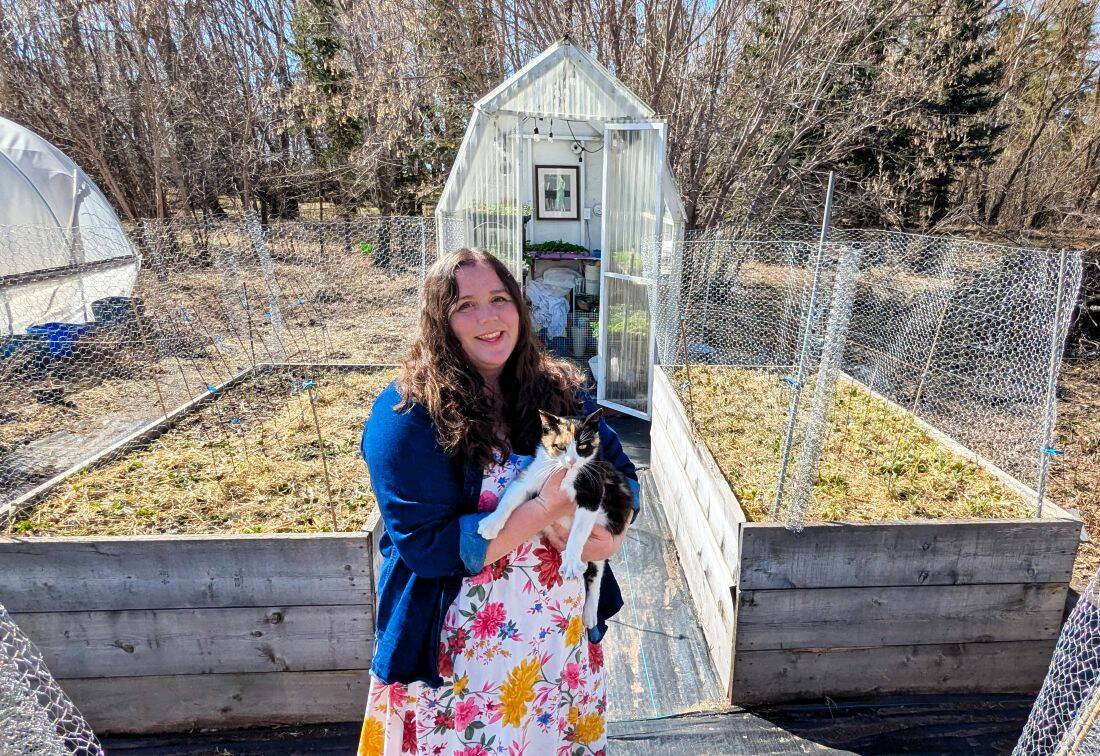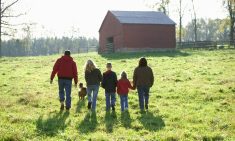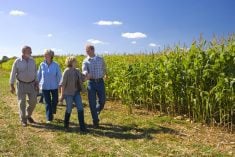Transition planning requires complicated professional tax and legal planning plus deep communication and strategic decision-making. It’s definitely not a do-it-yourself (DIY) project. However, there are some things you can do yourself ahead of transition planning to make it go more smoothly. They will save you time, money and headaches in the future.
Many of us lean on the excuse that we don’t have clarity on whether the kids want the farm. We use it as a reason to not get ready. However, whether a successor comes back home or not doesn’t mean you shouldn’t prepare for inevitable change.
This is a time for you and your spouse to talk about new possibilities and to create a unified platform for when you bring your children into the conversations. Besides, some information gathered together before you start succession discussions will set the process up for success.
Read Also

A season of trial and colour
Following a Saskatchewan flower farmer through the seasons.
In other words, get your own ducks in line before you start to build a new duck barn.
This preparation is not where you find permanent solutions. Instead, it’s a time to write down information, learn and gather your thoughts. Here are seven specific tasks to help prepare yourself and your farm before transition and retirement planning begins.
1. Family and business chart
Write down who is in your immediate family and who they are married to or living with. Add a brief note about where they currently live, what they do for a living and their children. Make a few notes for yourself about any special needs. This might also be a good time to access and write down how much you’ve helped each of your children already, including paying for education or co-signing loans.
On a separate page write a very general current organizational chart for the farm. Who does what on the farm? Who is in charge of what now?
2. Farm asset catalogue
Simply write down a list of all the farm assets and who owns what legally. Include things like location description. As Andrea De Groot, transition specialist with FCC in Ontario points out, with today’s large farms it’s confusing sometimes which assets are held where.
If you do this on an Excel spreadsheet you can leave blank columns that you will be able to come back to later to fill in fair market value, book value, acquisition date and the associated debt the farm is carrying on those assets. At this stage, it isn’t important yet how much everything is worth, so De Groot recommends just sorting out whose name(s) those assets are under and what percentage they own, although if you’re keen you can fill in some preliminary values as they’ll be useful for your personal net worth statement and can be updated later.
Although you’re not doing this for your ego, take a moment and think about what your farm looked like when you started. You’ve come a long way, and built lots of capacity to support yourself and help your family be successful. Breathe that in for a moment and let it settle into your bones. It will inspire you to plan well for transition.
3. Personal net worth statement
You are not just your farm. A good place to build that understanding is knowing what is under your name personally. This can include life insurance values, off-farm investments, land, homes, cottages or vehicles held personally. Do either you or your spouse have RRSPs or pension investments? Remember to include debt held personally such as personal credit card balances or personal lines of credit.
This is also where you’d list shares or other farm asset ownership. Make a note of all the things that are held with other people and the ones with debt and assign net value on a percentage of this ownership based on the Farm Asset Catalogue.
4. Review your will. If you don’t have one, get one
The threat of the pandemic has amplified the need for having updated wills. Ensure those with power of attorney and health care proxies are people within your own province, in case of travel restrictions.
The power of attorney document allows for an identified person to keep your farm business operating in case you are incapacitated by for example a coma. I recently helped my family with my mom’s health directives and it was imperative that I could be in person to help my mom navigate our COVID-stretched care system and communicate to my siblings.
Second, keep a copy of your will in a secure place and let a trusted member of your family know where this copy and the original are kept.
“Is the will and power of attorney in a place where a family member can find it?” asks Bryan Huck, BDO’s business transition planner.
Huck also suggests taking a moment to reflect if you have had any conversations with family members about the contents of your will and if your will still serves your current farm and your family.
5. Living budget
Developing fair compensation is one of the greatest transition challenges many farm families face. Although taking stock of how much it costs to live can seem inconsequential after going through the asset base of your farm, it’s imperative for both generations to have a realistic idea of how much it’s costing them to live before talking about transition. You can find many templates for this online or create your own Excel spreadsheet.
Personal draws are not only living costs. You need to add in all the things you’ve put through as farm expenses such as housing, truck leases, meals, cell phones, fuel and utilities. These benefits are non-taxable.
Once you do it, share your budget with your children and challenge them to do a living budget. Whether they’re coming back to the farm or working in the city, this is good financial knowledge. This is also a starting place for your retirement planning.
6. Farm financial health checkup
Dig into the farm’s operational income statements to get a good idea of what your farm is making currently and it’s potential,” says De Groot. “Business viability is the number one challenge I find in every conversation with farm families — the ability to service the debt (debt structure) and turn a consistent profit.”
As a starting point, ask your accountant or banker the following questions:
- What is your farm’s debt servicing capacity?
- What are the five-year trends in overall farm profitability?
- What production areas have the best and worst gross margins?
In other words, what is driving profit and what’s holding it back?
7. Dream big
What do you visualize that your farm will look like in 10 years? Do not get caught up in the details or costs at this point. This is to help you shift your thought process forward toward new goals.
It’s also a time to really think and talk about retirement with your spouse, before you meet with your family to try to get some alignment and respect for independent ideas. “Everyone has different comfort zones and expectations of what fun means, so there has to be some compromise and this takes communication,” says De Groot.
This is figuring out a way for both of you to enjoy the fruits of your labour, so you both need to be open to try new things.
Keep it between you until you align on a few top priorities. It might help to bring in some outside expertise, or at least shop around for some good financial advice, says Huck. “Some financial advisors are great for walking the couple through retirement conversations like this.”
For more information about farm transition planning please contact Bryan Huck, CPA and family enterprise advisor BDO [email protected]. Maggie Van Camp is BDO national agriculture practice development lead, co-founder of Loft32 and CEO of Redcrest Farms Ltd.















